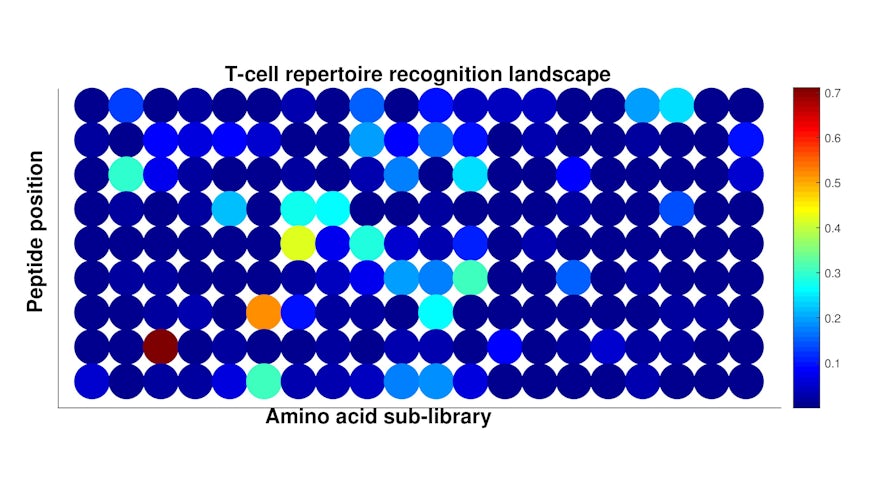New collaboration expands open-access peptide identification tool, PICPL
8 Mawrth 2017

Researchers from the University’s Systems Immunity Research Institute have teamed up with ARCCA and the Warwick Systems Biology Centre (WSB) to expand the open-access tool PICPL (Peptide Identification from Combinatorial Peptide Libraries).
PICPL, which was developed at WSB, uses readouts of a powerful peptide scanning method called combinatorial peptide libraries (CPLs).
Using PICPL
The new tool ranks peptides from self, viral, bacterial and fungal proteins based on CPL data, allowing the user to make use of the computational power of the University’s Supercomputer, Raven, and thus reduce the time taken before results are available for analysis.
A web-based front end, running on a virtual machine and integrated into Raven, allows users to upload their CPL data and select the database they wish to scan against, automating what would normally be a complex technical exercise.
Benefits of using PICPL
T cells are necessary for our own immunity. Killer T-cells (CTLs) are able to scan the surface of cells searching for disease-associated antigens, thus enabling them to hunt down infected or cancerous cells.
To do so, CTLs must distinguish between self and foreign (disease-associated) antigens. If this self-nonself recognition malfunctions, it can lead to immune responses such as transplant rejection, autoimmunity and allergic reactions. To confer protection against foreign invaders, while remaining tolerant to healthy tissues, T-cells must be sufficiently cross-reactive.
Experimental and modelling work revealed that T-cell antigen recognition is truly degenerate; a single T-cell receptor (TCR) can recognise over one million different peptides [1]. This data indicates the complexity of antigen specificity and the paramount necessity for web-based tools to help to elucidate this key feature of T-cell immunity.
Searching of peptides in large protein sequence databases represents a significant software challenge.
CPLs define a TCR’s amino acid preference at each position of the peptide; columns in the figure correspond to the 20 proteinogenic amino acids and rows correspond to the amino acid position in the peptide of length 9.
Further information about the tool can be found in [2].
Systems Immunity Research Institute
WSB is part of the Zeeman Institute
References
[1] L. Wooldridge et al., A single autoimmune T cell receptor recognizes more than a million different peptides, J. Biol Chem. 287, 1168-77, 2016.
[2] B. Szomolay et al., Identification of human viral protein-derived ligands recognized by individual major histocompatibility complex class I (MHCI)-restricted T-cell receptors, Immunol. Cell Biol. 94, 573-82, 2016.